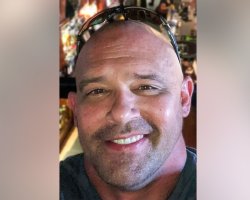Most Opioid Pill Addicts Still Receive Opioid Prescriptions Following an Overdose

Addiction is the health crisis of the century for millions of Americans and their families. A cursory examination of the addiction epidemic timeline reveals that pharmaceutical opioids played a huge role in the creation of the epidemic. One does not have to search far to find out that the massive increase in painkiller production, distribution, and prescribing during the late-1900s and early-2000s played a considerable role in the epidemic that soon followed.
The National Center for Biotechnology Information has a detailed research document outlining the inception and advancement of the opioid crisis. Their material proves without any shadow of a doubt that the crisis began with an initial and significant increase in prescribing. Quoting the NCBI text: “Medical prescriptions for opioids started to increase sharply in the mid-to-late 1990s. Shortly after that, non-medical opioid use also started to increase markedly, reaching a peak of 2.7 million new users in 2002.”
The evidence clearly shows that pharmaceuticals are much to blame for creating and continuing the epidemic. However, further evidence also indicates that many doctors continue to prescribe opioid painkillers to dependent individuals, even after those individuals suffer a near-fatal drug overdose. Why is that?
A Big Mistake in Prescribing
An article in the Harvard Medical School periodical shed light on this odd disparity. The report covered a separate research project taken on by the Boston Medical Center. A group of researchers at the Boston Medical Center examined the medical charts and files of 3,000 patients who had survived an opioid overdose between 2000 and 2012.

The results were quite astonishing. According to the Harvard Medical School article, over 90 percent of the 3,000 patients continued to receive opioid medications from doctors, even following a near-fatal overdose. To say that their study findings are alarming is not even capturing the severity of the situation.
Why are doctors continuing to prescribe opioid painkillers to patients after those same patients nearly died from taking them? That would be akin to eating something, finding out that one was extremely allergic to that item, having a terrible, life-threatening reaction as a result, and then choosing to consume the substance again. Except, in this case, it’s not just the patient who is making a mistake. It is also his doctor who is prescribing his patient the same drug that almost killed the patient previously. It’s difficult to comprehend any sense in this pattern of prescribing.
The study reported on patients receiving opioid medication for chronic pain who were followed for 300 days following a survived overdose. Ninety percent of them were given a new prescription for painkillers within that period. Seven percent of them overdosed a second time. In the vast majority of cases, the same doctor wrote the opioid prescription before and after the initial overdose.
Addressing the Lack of Communication
In many of the above 3,000 cases, the prescribing doctors did not know that their patients had suffered an overdose. If the patient never disclosed that information to their doctor, or if the hospital where the patient was treated for his overdose never forwarded that information to the patient’s doctor, there would be no way for the doctor to know that his patient had almost died from the very drugs that he, the doctor, was prescribing.
What we have, then, is a clear communication gap which has proven extremely dangerous, even fatal, in regards to the ethical and conservative prescribing of opioid painkillers. At the very least we must insist that information about opioid overdoses be communicated back to the prescribing doctor.
One way to correct the lack of communication would be through the mandatory use of prescription drug monitoring programs. Prescription drug monitoring programs constitute massive, state-wide electronic databases. Doctors can use these databases to see if patients are obtaining multiple prescriptions from different doctors. These databases could also be set up to include information about overdoses. Another way to correct the lack of communication would be for a patient’s insurance company to inform the prescriber of a recent overdose.
Getting to the Root of the Problem

While correcting the lack of communication is an important goal, this case of patient overdoses is really quite indicative of the far more pressing problem—the fact that patients are put on potentially harmful, addictive drugs in the first place. First off, doctors are given very little education and training on how to safely manage chronic pain in their patients. They are also lacking in education and training on how to treat patients who struggle with addiction. A critical component in reducing overprescription is simply that of improving how medical schools and residency programs are educating doctors.
Last but not least, if a patient does become addicted to his opioid painkillers, the remedy is to get that individual into and through a residential drug addiction treatment center. Opioid treatment for pain can fast become a full-blown addiction, and such a crisis is beyond a doctor’s ability to treat. Only residential care at a qualified treatment center offers a safe and effective solution for helping those who are dependent on drugs.
If you know someone who began taking opioid pharmaceuticals for pain and wound up addicted to them, you should strongly encourage them to seek help at a residential treatment center. Don’t take no for an answer. Just because opioid painkillers are legal does not mean that they are safe or non-addictive. Get your loved one help today.
Sources:


 ®
®